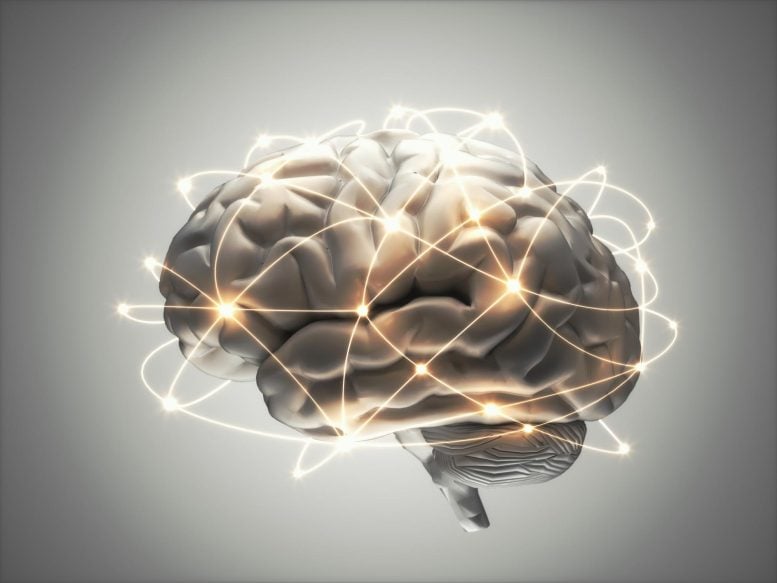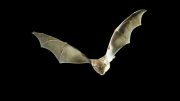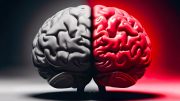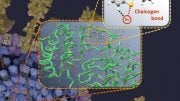
Recent research suggests that higher levels of light exposure can improve alertness and cognitive performance by influencing the hypothalamus in the brain. This finding supports the potential for light therapy treatments to enhance daily function and sleep quality. The study emphasizes the need for further investigation into how light interacts with brain structures to affect behavior.
Research indicates that increased light exposure can enhance activity in a part of the brain known as the hypothalamus and boost cognitive performance.
New research suggests that higher light exposure can enhance alertness and cognitive performance, likely by affecting the activity in areas of the brain region known as the hypothalamus.
The study, published in the journal eLife, is described by the editors as of fundamental importance, and represents a key advancement to our understanding of how different levels of light affect human behavior. The strength of evidence is praised as compelling, supporting the authors’ analyses of the complex interplay between light exposure, hypothalamic activity, and cognitive function.
With further research, the findings could be used to inform various light therapy treatments to increase an individual’s quality of sleep and affective state, and help them feel more awake and perform tasks better throughout the day.
The biological effects of light exposure have been well-documented in recent years. Higher illuminance has been shown to stimulate alertness and cognitive performance. These effects primarily rely on a subclass of light-sensitive cells in the retina, called ipRCGs. These cells project to multiple areas of the brain, but projections are most densely found within the hypothalamus, which is typically associated with the regulation of circadian rhythms, sleep and alertness, and cognitive functions. However, this knowledge of the brain circuitry underlying the biological effects of light has almost entirely stemmed from studies in animals.
Study Details and Findings
“Translating findings on how light exposure affects the brain in animal models to humans is a difficult process, as the later maturation of the cortex in human beings enables much more complex cognitive processing,” explains lead author Islay Campbell, former PhD student at the GIGA-CRC Human Imaging – now awarded her doctorate – University of Liège, Belgium. “In particular, the question of whether hypothalamus nuclei contribute to the stimulating impact of light on cognition is not established.”
To better understand the impact of light on human cognition, Campbell and colleagues recruited 26 healthy young adults to participate in their study. They asked each participant to complete two auditory cognitive tasks; an executive task modified from the ‘n-back task’ in which participants were asked to determine whether a current sound was identical to the one they heard two items earlier, or contained the letter ‘K’; and an emotional task, in which participants were asked to identify the gender of a voice that was either pronounced in a neutral tone or in an angry tone. Each task was completed whilst the individuals were alternatively placed in darkness, or exposed to short periods of light in four levels of illumination. The team used a technique called 7 Tesla functional magnetic resonance imaging, which has a higher resolution and signal-to-noise ratio compared with standard 3 Tesla MRI, to assess the impact of the different light levels on the activity of the hypothalamus during the tasks.
They found that, during both tasks, higher levels of light triggered an increase in activity over the posterior hypothalamus. In contrast, the inferior and anterior hypothalamus followed a seemingly opposite pattern, exhibiting decreased activity under higher levels of light.
Next, the team sought to determine whether these changes in regional hypothalamus activity were related to a change in cognitive performance. They focused on assessing the participants’ performance during the executive task, as this required a higher level of cognition to solve. Their analysis revealed that higher levels of light indeed led to better performance in the task, indicating an increase in cognitive performance. Importantly, the increase in cognitive performance under higher illuminance was found to be significantly negatively correlated with the activity of the posterior hypothalamus. This makes it unlikely that the posterior hypothalamus activity directly mediates the positive impact of light on cognitive performance, and possibly hints at other brain regions being involved, requiring further research.
On the other hand, the activity of the posterior hypothalamus was found to be associated with an increased behavioral response to the emotional task. This suggests the association between cognitive performance and the activity of the posterior hypothalamus may be context-dependent – in some tasks, certain hypothalamus nuclei or neuronal populations may be recruited to increase performance, but not in others.
Future Research Directions and Conclusions
The authors call for future work in this area to assess the impact of light on other structures, or entire networks of the brain to determine how varying light levels modify their crosstalk and interactions with the cortex to bring about behavioral changes.
“The questions that remain from our study are important to answer, because acting on light stands as a promising easy to implement means to reduce fatigue throughout the day, improving cognitive defects and allowing a restful night’s sleep with minimal cost and side effects,” says Campbell.
“Our results demonstrate that the human hypothalamus does not respond uniformly to varying levels of light while engaged in a cognitive challenge,” says senior author, Gilles Vandewalle, co-director of the GIGA-CRC Human Imaging, University of Liège. “Higher levels of light were found to be associated with higher cognitive performance, and our results indicate that this stimulating impact is mediated, in part, by the posterior hypothalamus. This region is likely to work jointly with the decreased activity of the anterior and inferior hypothalamus, along with other non-hypothalamus brain structures that regulate wakefulness.”
“Targeted lighting for therapeutic use is an exciting prospect. However, it will require a more comprehensive understanding of how light affects the brain, particularly at the subcortical level. Our findings represent an important step towards this goal, at the level of the hypothalamus,” notes Campbell.
Reference: “Regional response to light illuminance across the human hypothalamus” by Islay Campbell, Roya Sharifpour, Jose Fermin Balda Aizpurua, Elise Beckers, Ilenia Paparella, Alexandre Berger, Ekaterina Koshmanova, Nasrin Mortazavi, John Read, Mikhail Zubkov, Puneet Talwar, Fabienne Collette, Siya Sherif, Christophe Phillips, Laurent Lamalle and Gilles Vandewalle, 23 April 2024, eLife.
DOI: 10.7554/eLife.96576.1









Hello, I read this part of the article very well. It says that when the brain is exposed to light, the functioning of the brain improves and becomes faster. The hypothalamus works better. I remember that I used to fly kites on the roof of my father’s office when I was seven years old. I had flown in a neighborhood called Vahidieh Narmak, where I had strung a hundred meters of communication wire, and I had flown the kite with a thick silk thread. It was night and the wind in Tehran was blowing from north to south, and I had sent the whole hundred meters of the kite wire into the sky. I connected the end of the electric wire to the 230V socket and connected three light bulbs to the gold paper kite that I made with 32 reed mats. I attached a 40 watt moonlight lamp, a 60 watt lamp and a 100 watt lamp to the kite. No one in Tehran is like that. He did not invent, the length and width of the kite was 3 meters
VPN so that I can send the photos I took to NASA, God willing, God is an Arab God, not our God, God and the Lords of the world are P
What is Dr. Mehrdad Aghaksiri’s opinion? I took a long time to post these comments and I am not feeling very well and I have stomach upset. I am a theorist. I already said that I am not an ordinary person and I am a person that God has shown. Yes, especially those in astronomy, I must message. and geology are special. I will message you again. I am going to a meeting. When I get back I’ll be back in a few hours and you’ll be talking about the paranormal and paranormal. God bless you. Now I know some secrets from the top secrets and the bottom secrets, but it’s no use to you, the admins of this website will reveal those secrets. Whenever I come to America, I will show you my miracles and my insides. This comment is like a comment. . If you liked it and didn’t see it, I’m not upset and I’m happy for you as the manager of this website because you showed most of my good comments. I know you believe in God and are connected to God. Indeed, in the existence of all human beings, every breath that goes out is a sign of life because it comes out and is the joy of nature. I saw in the translation that Fash has translated this artificial intelligence. I don’t have to show what the pictures I post look like. The appearance in the translation should not mean that Fash has translated words that are Farsi, but when I translate them into English, they are messed up. The meaning of the publisher is not clear and this makes me unable to tell you what I mean